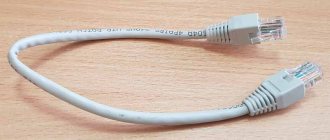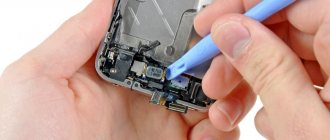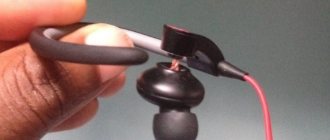Smartphone screens are getting bigger and bigger, and mobile Internet access is getting faster and faster. This is leading to smartphones being increasingly used to access online music and video services or to view full multimedia web pages.
All of these services can eat up Internet traffic at an alarming rate. The solution may be to purchase additional gigabytes of traffic, but there are methods that do not require investment of additional funds, which may be especially interesting for people who travel abroad a lot.
What these methods have in common is that they are all relatively easy to implement and, moreover, do not significantly affect the way we use a smartphone or tablet.
Here are 12 ways to limit data consumption on your Android smartphone . What is important: all examples, names and positions in the menu are obtained from “pure” Google Android 7.0 - the most popular (according to the website Developers.android.com) version of this system at present.
Where to look for traffic settings
To get to the appropriate settings, we will take turns opening the nesting dolls, one after another. The largest of them is “Applications” (screenshots are provided for Android 5.0.2):
Rice. 1. Open Applications in Android
Having opened Applications in Android, we find Settings there:
Rice. 2. Android Settings
In the settings we need “Data Usage”:
- Traffic on the Internet - what it is and how to find out its volume - we tell you in detail
Rice. 3. Open “Data Usage”
How to remove traffic restrictions on Android
If the Internet is unlimited, then you can forget about restrictions. To remove them, just uncheck the “Mobile restrictions” checkbox as shown below (number 2 in Fig. 4), because if there is no checkmark, there are no restrictions.
Rice. 4. No mobile data limit (none)
In Fig. Figure 4 shows that there are two types of Internet traffic on an Android smartphone:
- via Wi-Fi,
- mobile traffic via SIM card (below it goes under the name Nadezhda).
It is also shown that the amount of consumed Internet traffic is so far 292 kb.
How to set up traffic limiting
We are interested in how we can change Internet traffic restrictions in order to fully take advantage of the Internet access services provided by the mobile operator.
- Let's draw a phone. How to draw a mobile phone on Android How to draw a touch phone
Click “Mobile Restriction” (2 in Fig. 4), after which a window will appear:
Rice. 5. Limit data transfer
I duplicate the message in the “Limit data transfer” window (Fig. 5):
“The data connection will be disconnected when the specified limit is reached. Data usage is measured on the device and your service provider may calculate your traffic differently, so set a tighter limit."
Here we can only click on the “OK” button, confirming our desire to limit data transfer so as not to overpay and so that Android monitors the volume of traffic and stops access to the Internet in a timely manner.
Set a limit on the amount of data transferred
Next, we can adjust the controlled limit on the amount of data transferred on the Internet (Fig. 6).
Rice. 6. Traffic limit set – 5 GB
In Fig. 6 shows that the Internet traffic limit is 5 Gigabytes. If you click on the number 5.0 GB, which is visible on the Android screen, then in the window that appears (Fig. 7) we can set any other limit by typing numbers on the online keyboard, for example, 15 GB.
Rice. 7. You can set a traffic limit using the online keyboard
- How to remove the traffic saving icon. How to disable data saving on Samsung
Or you can simply “move” the top line, which limits traffic to 15 GB, as shown in Fig. 8. You need to move by hooking the line in the place where the bold dot is located - at the opposite end from the inscription 15 GB. The line moves easily both up and down.
Rice. 8. The traffic limit is set to 15 GB.
We will move the line limiting the traffic limit down, hooking it to the bold point at the top right (circled in a frame in Fig. 8).
Thus, for example, we will set the upper limit at 2.9 GB (Fig. 9). You can also move it by catching the bold dot and the “Warning” line. This line shows at what volume of traffic on Android a warning will be displayed about reaching the specified limit, but restrictions will not be enabled; Android will still have access to the Internet. But when the upper limit is reached (in the version in Fig. 9, this is 2.9 GB), the Internet will turn off.
For those who are too lazy to move the black line up or down, they can simply click on the number next to the “Warning” line to use the on-screen keyboard (Fig. 7) to indicate the amount of traffic at which a warning will be received.
Rice. 9. Finalized values for Warnings and Internet Traffic Limits on Android
More subtle settings: Where Internet traffic goes in Android and how to save it
Results
That, in general, is all the wisdom of setting warnings and limiting mobile Internet traffic on Android. It must be said that the established warnings and restrictions apply to Android in any way of using the Internet, be it accessing the Internet on Android, or turning Android into an access point for “distributing Wi-Fi,” using mobile applications with Internet access, using email etc. All traffic will be taken into account by this access restriction control system.
Unfortunately, the traffic that Android counts may not match the traffic that the mobile operator itself counts. In my experience, it happened when Android had not yet limited access to the Internet, but the mobile operator had already sharply reduced the Internet speed or turned it off altogether.
- How to install applications (APK files) from PC to Android - step-by-step instructions
To avoid such a discrepancy (whether we like it or not, mobile operators and Android devices will always count traffic differently), on Android it is useful to set traffic limits a little less than what the mobile operator assumes.
In particular, in Fig. Figure 9 shows the installation of a limit of 2.9 GB with a given limit of 3.0 GB from the mobile operator. With such restrictions set, there will be no conflicts between Android and the mobile operator, and Android will notify in time and then turn off the Internet, without waiting for the mobile operator itself to do this.
Additional materials:
1. 9 Android Energy Saving Tips
2. How to transfer files from Android to computer and vice versa without the Internet
3. Video calls on Android: 8 applications
4. How to install an application on Android: 2 ways
5. Lost cell phone: how to find it
Print this article
Receive the latest computer literacy articles directly to your inbox
.
Already more than 3,000 subscribers
.
Important: you must confirm your subscription!
In your mail, open the activation letter and click on the link provided there. If there is no email, check your Spam folder.
June 7, 2018
The beta version of the global firmware MIUI 9 7.12.14 (dated December 14, 2017) has a nice feature - setting a limit on outgoing Internet traffic. In the future it should appear in stable firmware versions.
To activate it, go to the system settings, select the “Wi-Fi access point” section and click on the “Traffic limit” item.
Change the position of the Traffic Limit switch to “on” and set the maximum number of megabytes that can be used during the connection.
There you can also select the action that will occur when the limit is exceeded, namely: a warning appears or data transfer is disabled.
It is worth keeping in mind that the set limit is valid only for one session of Internet distribution via Wi-Fi and the next time it is distributed it will again be equal to the value set in the settings. The traffic limit is summed up for all devices connected to the access point.
Information on how to enable the access point itself and configure it correctly can be found in the article:
Xiaomi smartphone as a WiFi hotspot
Other useful articles:
Your mark:
Until recently, you could only use the Internet on a smartphone by connecting to Wi-Fi. Now 3G and 4G coverage provides almost limitless possibilities, no matter where the user is. But what about payment for such a necessary benefit? As soon as you slightly exceed the volume allocated by the tariff plan, the money literally flies out of your account. Setting a traffic limit will help you stop on time and not be left without funds.
When setting limits, the time when the phone is connected to Wi-Fi is not taken into account; no additional charges are charged for this. Traffic control will require you to enter into the settings the number of MB that can be downloaded per month and the start date of recording.
Depending on the selected settings, when the limit is exhausted, the smartphone will notify the user and stop transmitting data via the mobile Internet.
The procedure for enabling the restriction is as follows:
- We activate the settings, go to “Wireless Networks”.
- Select the “Data transfer” item and in this menu go to settings – the icon in the form of a cogwheel in the upper right corner.
- Click on the “Monthly traffic limit” item and enter the parameters we need.
- The “Start date” section allows you to control the countdown from a specific day; it can be the current date or any other date entered manually.
- In the line below, open “Traffic Notifications” and use the slider to set at what stage the smartphone should send a notification about the end of package MB.
The limit has been set, and uncontrolled withdrawal of money from the account no longer threatens the user. Share link:
Partner news and advertising
Modern smartphones consume gigabytes of Internet traffic, and a significant part of it is spent even without the user’s knowledge. Where does Internet traffic go? It is spent on synchronizing data, updating applications, maps, automatically playing videos and music in high quality, etc. You may even hardly use the Internet on your smartphone yourself. “Smart” applications spend megabytes and gigabytes of traffic on their own, and you end up with a hefty bill for the services of your mobile operator, or the Internet simply turns off at the most inopportune moment due to exceeding the monthly limit. This article will discuss how to save Internet traffic on a phone running Android and iOS operating systems.
How to disable data saving on Samsung Galaxy
On the main or secondary screen of your smartphone, find the Settings icon and click on it.
In Settings, click on the Connections tab.
Next, in the connection settings, click on the Data Usage tab.
Next, on this page, click on the Traffic Savings tab.
Here you can enable or disable this feature by clicking the switch on the right.
Click on the Use apps while saving data tab.
You can enable certain apps to be used even when data saving is enabled.
In the modern world, it is difficult to live at least one day without a phone, smart watch, tablet and other equipment. All these devices have one important thing in common – mobile Internet. In this article we will look at an important topic - limiting mobile traffic on your phone.
What is the limitation of mobile traffic?
There are several types of mobile traffic restriction settings:
Programs for saving traffic
Let's look at 5 popular applications. It is important to know exactly how the utilities work, their capabilities and additional functions.
You can download the free application - . It compresses mobile data on Opera Software's servers before it reaches your device.
Practice has shown that this method of data compression has been successful, so Opera is actively promoting the Opera Max application for Android.
You can configure mobile traffic limitation using this application. It works on this principle: the smartphone submits a request to the Internet provider, then the data goes to the company’s server, then you receive compressed data. The quality does not suffer from compression, although the resulting data becomes several times smaller. Before you can use the app, you need to allow it to send information to Onavo servers. With this program you will safely use the mobile Internet, since the connection is made through a VPN.
Data Status
In Data Status, traffic also passes through third-party servers. One of the differences between this application and others is its clarity. On the main screen, the developers have placed graphs that show where mobile traffic goes. The utility is in English, but users who do not know English should not be afraid of this. The program is quite simple and easy to understand.
Osmino Wi-Fi
According to the developers with Osmino Wi-Fi, you no longer have to waste mobile Internet traffic. Why? The program itself will find an available Wi-Fi point and connect to it, even if you don’t know the password for the point. The application is in Russian, which makes it easier to use the application. Additional functions are also present - a speed test, a list of open points near your location.
A nice feature is that you can turn Wi-Fi on and off to save battery power in automatic mode. For example, at home or at work, WeFi Pro will automatically connect to a given network and turn off Wi-Fi in places where this network does not exist. You can specify networks to which you do not want to connect. The main function of the application is to connect to the most accessible Wi-Fi points.
Traffic saving mode
You can manually enable traffic saving mode. To do this you need to follow a few simple steps:
- Go to “ Settings
” - «Mobile network
» - «Data transfer
» - Open the “ Data Usage Cycle
” - Specify the time period in which the restriction will be applied
- We set the volume of traffic beyond which we would not like to go
- Check the box next to “ Limit mob.
traffic »
Versions of Android 7.0 and higher have a special mode that helps save mobile Internet traffic. You can enable it by doing 2 steps:
- Open the Quick Settings panel
- Enable data saving mode
How to disable data saving on Android
Disabling data saving is as easy as enabling it. It all depends on which method you choose for yourself. If you are using an application, then go to it and disable this function, or completely remove the utility.
- Go to “ Settings
” - «Mobile network
» - «Data transfer
» - Open the “ Data Usage Cycle
” - Uncheck “ Limit mob.
traffic »
You can not use the Internet, and then the problem seems to disappear. This is the wrong decision. Smartphones sometimes update themselves, send error data, and do much more. It is worth protecting against too much traffic consumption.
What other ways are there to limit mobile traffic?
All you have to do is make sure that your device's data connection is turned off when you're not using it. Try to use less applications that “eat” traffic, for example, weather forecasts, horoscopes and others.
Hello! Despite the fact that the number of gigabytes included by cellular operators in their tariffs is growing every year (and completely unlimited solutions are already appearing), and the price, on the contrary, is falling, still not many can afford completely unlimited Internet on their device. And here, most likely, it’s not a matter of “allowing”, but simply not many people need it. There is a conditional one gigabyte per month and it is enough - why pay more?
But in some cases (especially when switching to an iPhone from another device), these same gigabytes suddenly begin to not be enough - when turned on, Apple’s mobile phone begins to wildly eat up traffic and eats up the entire available limit in a few hours. And here the screams begin: “The iPhone is bad, I just inserted a SIM card - I don’t do anything, and the traffic goes away on its own (and even the battery is drained!).” Ay-ay-ay and all that. ) Why is this happening? Believe me, not because the iPhone is bad and the company decided to ruin you, no.
The thing is that the iPhone, like any modern smartphone, has a number of settings that you simply need to pay attention to in order to avoid such “arbitrariness” of your smartphone with your own Internet.
But first, a small list of where traffic on iPhone can go without your knowledge:
- The programs themselves use traffic for their needs.
- Sending service information.
- Weak Wi-Fi signal.
- Synchronization of iCloud services.
- Say that push notifications, mail loading, etc. they really eat up the entire cellular Internet - it’s impossible. If they use it, it is in very small quantities.
- And if you turn all this off, as suggested on many sites (the most brilliant advice I’ve come across is don’t turn off the Internet in the settings so that you don’t waste it), then why use an iPhone?
An experienced reader and user will say: “Yes, there are still plenty of places where traffic can flow!” And he will be right - mailbox updates, push notifications, browser, etc. all this also affects the number of gigabytes consumed, but:
Therefore, we’ll try to make do with little expense - we’ll ban the iPhone from consuming the Internet on its own, but without much damage to us.
Where does the traffic go - identifying and disabling parasitic applications
Increased consumption of Internet traffic is not always associated with the user’s appetites. Often the root of this problem lies in the unjustified gluttony of some applications installed on the phone. Such parasitic applications run in the background and send something the entire time you have mobile data turned on. This is especially true for smartphones based on Android. You can find out where your traffic is being spent and identify such applications using a standard software tool available on any Android smartphone. In order to reduce traffic consumption in this way, you need to follow these simple steps.
- Go to Android settings.
- Select "Data transfer". The window that opens will show the total consumption of mobile traffic for the current day, and below - the traffic consumption by individual applications. The apps that spend the most internet are shown above.
- In order to reduce the traffic consumption of an individual application, you need to click on it, and then turn off data transfer in the background. After this, the application will stop sending data in the background, without your knowledge.
The difficulty may lie in the fact that in order to identify pest applications that waste your traffic in vain, you need to know the normal traffic consumption value for specific programs. For example, browsers, music services, Youtube, Google maps can certainly consume hundreds of megabytes of traffic per day. And this is the norm for them (although in their case, mobile Internet consumption can be reduced, as will be discussed below). Whereas for applications focused on working in offline mode (that is, without a constant connection to the Internet), traffic consumption of 200-300 megabytes per day or more is clearly abnormal.
How to turn off notifications in Android 5.0
To do this, when you receive an unwanted notification, you need to click on it and hold your finger on the screen until the notification is highlighted in black. After this, you need to click on the button with the letter “i”, which will appear on the right side of the notification.
After clicking on the button with the letter “i”, a window will appear on the screen in which you can turn off notifications. To do this, just activate the notification blocking function.
It should also be noted that in the Android 5.0 settings there is a separate section called “Sounds and Notifications”, where you can fine-tune the display of notifications.
Prevent the use of mobile traffic for auto-updating applications
Many Android applications constantly require updates, and a significant part of them download these updates when they see fit, in the background, using your mobile data. To save internet, you can disable app updates via the mobile network, allowing updates only when connected via Wi-Fi. I’ll tell you step by step how to save mobile Internet in this way, using my smartphone (Xiaomi Redmi 5A) as an example.
- I go to settings.
- I select “Component Update”.
- I click on the settings icon (gear) in the upper right corner.
- I select "Automatic update".
- I set the option “Update via Wi-Fi”.
Depending on the model of your smartphone and the version of Android OS, this procedure may differ slightly, but its essence will be the same.
How to consume less traffic - YouTube on a diet
The YouTube client app runs every file in high resolution by default, but the benefits of this are hard to appreciate on a small smartphone screen. Therefore, it is worth considering limiting the maximum resolution of the video you watch when using mobile data.
Open the YouTube app and go to Settings → General. You'll find some interesting options. The first command is Play HD video over Wi-Fi only. In the same menu, you should also disable the Autoplay function (so that YouTube does not continue to play other videos if, for example, you wander off somewhere).
Use the “Traffic Saving” mode on Android
To activate data saving on your Android smartphone, follow these steps.
- Open Android settings.
- In the window that opens, select “Data transfer”.
- Activate the “Traffic Saving” mode.
If you figured out how to enable data saving on Android and did everything correctly, then after activating this mode, the system will automatically turn off background data sending for most installed applications. This will lead to a significant reduction in overall Internet consumption. If you want to disable traffic saving mode on Android for individual applications, just click on the appropriate item.
Using offline features
Streaming music
Use saved videos and music to save data, or use the offline features of music and video streaming services.
Most music streaming providers offer an offline feature. This way you can store your favorite songs on your smartphone and play them. Additionally, you can download your favorite tracks via Wi-Fi to the internal memory or MicroSD card and play them using the music player app.
Saving traffic in Google Chrome
Every competent developer, if his application is focused on transmitting a large amount of information, can save traffic by changing settings. For example, to optimize mobile Internet consumption in the Google Chrome browser, you need to perform the following steps (screenshots are shown on the example of a Xiaomi Redmi 5A phone):
- Launch the Google Chrome browser.
- Open its settings.
- In settings, select "General".
- Activate the “Traffic Saving” mode by moving the slider to the right.
Tips for saving data on your smartphone
Listen to our advice on how to control the consumption of gigabytes with the function of saving megabytes of traffic disabled, so as not to overpay for mobile Internet and not exceed the limits established by the operator. After all, as you know, if we use traffic of a certain standard, we will continue to use the Internet. But now under new conditions that are beneficial not to us, but to the mobile operator. The first thing you need to do when using limited Internet is to disable auto-updates for mobile applications.
For this:
- This can be done through the Google Play mobile application. Open it and select the “Menu” icon at the top left; Click the menu button on Google Play
- Then select “Settings”;
- Select "Auto-update" and select "Never" or "Only when connected to Wi-Fi." Select Android update availability
If you often use mobile browsers on your phone, then a special “Traffic Saving” mode will help you control the Internet. It is available in Google Chrome for mobile, as well as in a number of other popular navigators. You should definitely remove all widgets from your home screen. They update information on the network quite often. For example, weather, news, exchange rates - these data require constant updating throughout the day. By adhering to certain rules for using programs, you can disable data saving in your Samsung smartphone as unnecessary.
How to save traffic when watching videos on YouTube
YouTube also has a “Traffic Saving” mode. To activate it, you need to go to the settings of this application, then select “General” and activate the “Traffic Saving” mode using the slider.
After enabling this mode, YouTube traffic consumption will be reduced due to the fact that now videos with HD resolution will only be played when connected via Wi-Fi. If you connect to the Internet provided by a mobile operator, YouTube videos will be played, but with a lower resolution, which will lead to significant traffic savings.
How to view the amount of data being transferred
First of all, you need to check how much data is being transferred. If you don’t know how much traffic you use, it will be unclear how you need to change your data consumption structure.
The easiest way to check your data usage is through your cellular provider's web portal. If you never use up your limit, it might be worth upgrading to a cheaper plan. If you never fit into your allotted traffic package, then you should definitely read the article further.
You can also view data consumption statistics on your Android device. Go to Settings -> Data Transfer. You will see a screen something like this:
It's worth noting that you will need to enter your billing cycle here in order to accurately calculate your data usage. Since your data will be reset on the first day of the new cycle, it will not matter what you used the month before, so the result will not be distorted.
In addition to the schedules, you can set a traffic limit, at which you will be shown a warning, or set a limit by adjusting the slider on the schedule, at which the transmission of mobile traffic will be disabled. Don't forget to enable the "Mobile traffic limit" option.
Once the limit is reached, mobile traffic will not be transmitted until you turn it on again.
How to control your data usage
There are two types of traffic consumed: when the user is using the application and knows that it is running over the Internet, and data usage in the background. When watching a video or downloading a new album, you consume a data package if you use mobile data rather than Wi-Fi Internet. Obviously, in order to use less data you need to stop streaming content and downloading files.
Use Google Maps offline rather than online
Frequent use of Google Maps online consumes a significant amount of Internet traffic, amounting to hundreds of megabytes per day. You can reduce traffic consumption by using offline maps that work without an Internet connection. To do this, you just need to download a map of the territory through which you mainly move. This is done as follows.
- Launch the Google Maps app.
- Go to your profile by clicking on the letter in the top right corner. On my screenshot this is the letter B (the first letter of my name Vyacheslav).
- Select "Offline Maps".
- Click on the “Select card” button.
- Mark the boundaries of the area for downloading (in my example, I highlight the cities of Temirtau and Karaganda (Republic of Kazakhstan), which I mostly travel almost every day) and click on the “Download” button.
- The maps should start loading. Make sure it goes well.
- Click on the settings icon (gear-shaped) in the upper right corner.
- Select "Download Settings".
- Make sure that "Only when Wi-Fi is available" is enabled (enable it if it is disabled).
Deny Internet access to applications via AFWall
As you can see, some apps consume much more bandwidth than others. In this case, the AFWall utility will come in handy. Root rights are required for its operation; read more in the article How to get ROOT rights. With AFWall, you can forcibly deny certain applications access to the Internet or allow it only through a Wi-Fi network.
Open AFWall and in the Mode line select White list or Black list mode.
When you select the White list mode, Internet access will be allowed only to those applications that have a check mark next to them. When selecting Black list, checked boxes will prohibit access to the network. After selecting the mode and checking the boxes next to the required applications, click the button in the upper right corner in the form of three dots and select Enable firewall, after which AFWall will turn on.
For example, if you want to block the Youtube application from accessing the mobile Internet, select the Black list mode, find the Youtube application and check the box next to it in the mobile Internet column. To disable AFWall, click the button in the form of three dots and select Disable firewall.
This way, you can control traffic consumption and use mobile Internet only when necessary.
How do you restrict applications' access to the Internet? Write your options in the comments.
Use the Android “Traffic Control” feature
Android smartphones automatically monitor outgoing and incoming data flows from the Internet. You can take your traffic under strict control by setting a monthly limit on the amount of information downloaded. This is done in a few simple steps.
- Open your smartphone's settings.
- Select "SIM cards and mobile networks".
- Go to "Data Transfer".
- Set a traffic limit (how many megabytes you allow to download monthly).
- Select the action algorithm when the monthly limit is exceeded (notify or notify and turn off the Internet).
Turn off location tracking
When the location tracking function is running, the smartphone's Internet traffic is consumed. By disabling this function, you can save traffic spent on establishing your current location with maps and other applications. Using my Xiaomi Redmi 5A as an example, let's look at how to save Internet in this way.
- After opening your smartphone's settings, go to the "Advanced Settings" section.
- In the menu that opens, select the “Privacy” tab.
- Select Location.
- Deny access to a location by moving the slider to the left.
Attention! If you need the location tracking feature, you can allow it to be determined by GPS satellites. In this case, mobile traffic will not be wasted.
Three ways to disable public notification on Android
Don't be upset if you think that such messages will never be deleted. At the same time, in order to get rid of numerous spam, you need to do the steps described below.
Method 1: Disable Push Messages
The first thing to start with is to find the “Messages” icon on the desktop and click it. Going there, look for “Options” or “Settings”. Having opened the found menu, you must select the section “ Information messages”
", on some devices they may be called "Push messages", or "Network messages". Next, after unchecking all the boxes, you will have to reboot your smartphone.
Method 2: Removing spam from information messages
Go to “Messages” and look for the “Options” or “Settings” item. After that, go to the found menu and look for “SMS/MMS Settings” there. Then you need to go to “Information Message Settings”. In the same way, uncheck all the boxes and reboot the device.
Method 3: Turn off the public notification function
We go to “Settings”, after which we look for the section with wireless networks. After that, click “More”. In the menu that opens, we look for the section that would be responsible for notifying the population. Uncheck all checkboxes and reboot the device.
Of course, if these methods are too complicated for you, you can try blocking messages using Titanium or CDMaid
(root). You can also go to a mobile phone store and turn off this newsletter there.
As soon as a person purchases a smartphone, he tries to configure it to work correctly. It is important, however, to configure notifications from the system itself and applications. After all, you must admit, when a personal SMS appears on a locked screen and anyone can read it (even a piece), then the meaning of blocking the device is reduced to zero. Therefore, we suggest that you familiarize yourself with ways to disable notifications on the lock screen in Android, as well as prevent games and programs from displaying their messages.
Use apps that save data
Sometimes, to get an answer to the question of how to save traffic on your phone, you have to turn to third-party applications. Such applications, available for download on the Play Market, have functions that allow you to limit the use of Internet resources.
Which browser saves traffic?
For those who surf the web a lot on their smartphone, the additional data compression function provided in some browsers will be useful. In this case, downloaded web pages first pass through a proxy server, where they are compressed, and then displayed on the screen of your mobile device. The simplest example of a web browser that saves traffic, in which the data compression function is activated by default, is the previously mentioned Google Chrome browser. It has a so-called simplified mode, which saves quite a large amount of traffic (specific savings figures using the example of my smartphone are presented in the screenshot).
The traffic saving function is also available in other popular browsers, for example, Opera, FireFox and Yandex Browser.
How to consume less traffic - data compression
Another devourer of the Internet traffic package is the browser. This can also be easily fixed. The most popular browser on the Android platform, Google Chrome, has a tool called Data Saver. Just go to the program settings and activate it.
This will cause the smartphone to redirect traffic through Google servers, where it will be compressed and adapted for mobile devices - Google promises that thanks to this, web surfing will not only be cheaper, but also much faster and safer (due to additional scanning for the presence of malware).
There is no need to limit yourself only to the Chrome browser; similar solutions are also available in Opera Mini. The developers have equipped this browser with a standard compression function for both traditional web pages and videos, and when downloading files.
Turn off Wi-Fi Assist on your iOS smartphone
In addition to ways to reduce traffic consumption on Android smartphones, there is a separate tip on how to save traffic on an iPhone. The “Wi-Fi Assist” function provided in Apple gadgets allows automatic use of mobile traffic when the Wi-Fi connection is poor. In such cases, mobile Internet is wasted, despite the fact that wireless data transmission via Wi-Fi is currently connected. By turning off this option, you can avoid accidentally spending mega- and gigabytes of tariff data.
“Help with Wi-Fi” – traffic on iPhone leaks very quickly
“Wonderful” option, which is enabled by default for some reason. Its essence is that if your Wi-Fi signal does not work, and the cellular network can provide better speed, Wi-Fi will automatically turn off and data transfer will go through the SIM card.
Not long ago I fell for this bait myself - I sat watching videos on YouTube and didn’t bother anyone. Then the iPad didn’t like something about my Wi-Fi (bad signal, insufficient speed) and considered it necessary to turn it off (which is important - no notifications come!), and I, blissfully unaware, continued to enjoy the video via cellular connection. I came to my senses only after the operator sent an SMS message with the text: “Your Internet package is coming to an end.”
Therefore, in my opinion, if you do not have an unlimited tariff, this option should be disabled immediately. How to do it:
I repeat, this option should be turned off in almost any case, so that there are no surprises with the disappearance of traffic.











